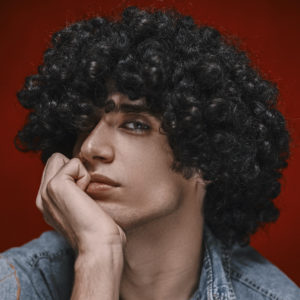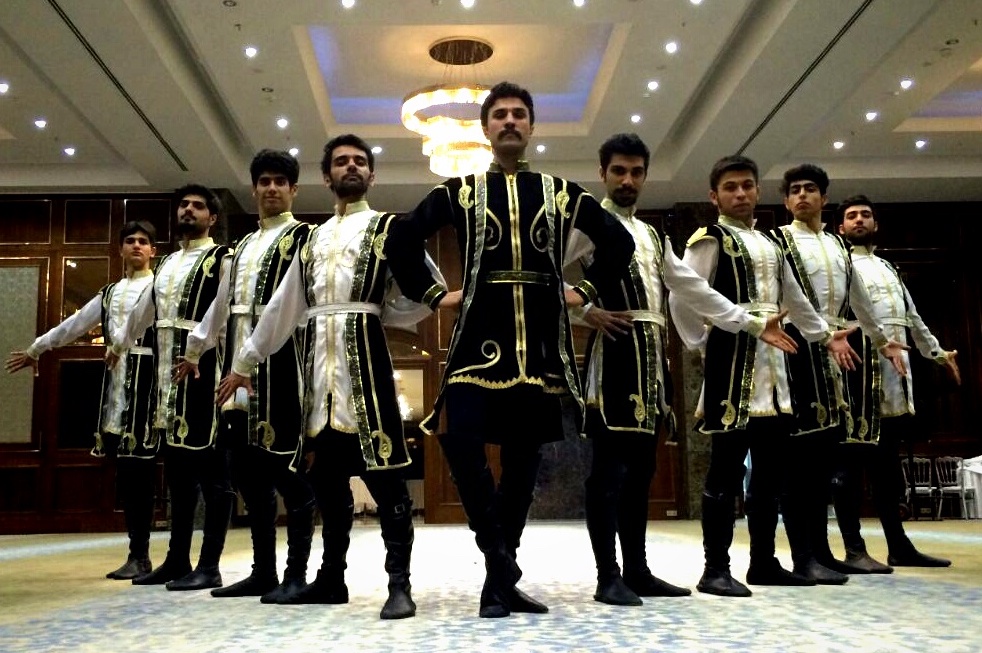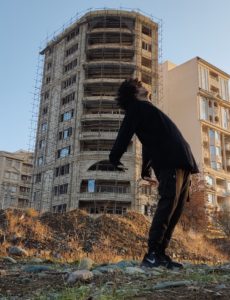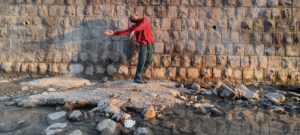From Beloved Urmia: Riza’s fluid new colours - Vancouver Ballet Society
- Home
- Features 2020 - 2023
- From Beloved Urmia: Riza’s fluid new colours

By Mahsa Hojjati
Beneath a wealth of dark curls, the artist moves. As I follow the rippling current from his fingers through his wrist, elbow, and shoulder, a flip of his neck guides the ripple through the opposite arm, back down a twisting torso, through gliding legs and sliding feet into infinite turns reminiscent of samā whirling, one of the many movement languages this body encompasses along with popping, tutting, and Azerbaijani regional dance. As intense as he is thoughtful and soft-spoken, Reza Babazadeh, better known as Riza, is a versatile Iranian hip hop artist who embraces multiple dance styles and musical genres.

When his family moved from his native Khoy to Salmas in West Azerbaijan province, Riza’s talent for drawing grew under an encouraging grade-six teacher. It wasn’t until their move to Urmia, though, where Riza enrolled in the architectural track at a vocational high school, that he found a true guide. Riza’s talent for illustration and design blossomed in Farhad Soleymani’s visual arts classes, which he continued beyond high school at Soleymani’s atelier.
“I was always inspired by lines,” says Riza, “and strove to translate the concepts I learned in drawing and design into dance.” The loose gliding circles he enjoyed in the technique of scribbling art naturally poured into the fluidity of hip hop, which he was introduced to during these same years. “I still remember the feeling,” he says, “when I first saw hip hop on a talent show. I knew this was something I could learn and enjoy.” He soon signed up for hip hop classes in a neighbourhood gym.
Despite the prohibition of dance in public spaces in Iran, about 15 years ago all hip hop dance styles grouped together as “breakdance” were officially registered by the sports federation under the label of “professional aerobics.” Permits were granted in gyms across the country for those willing to stick to the re-named and regulated form of this art, which also attracted bodybuilders, tracers of parkour, and gymnasts at a time when Urmia was known as an important centre for gymnastics.
Annual battles started bringing breakers together from provinces across the country. Footwork, power moves, airflares, and flips dominated the cyphers, but other styles were practiced as well, such as popping and tutting, which Riza was drawn to. In 2013, he participated in the first formal popping battle held in Iran’s capital, Tehran.
After months of formal classes, he decided to keep practicing on his own. “This way,” he said, “I’d be freer to create.” He also wanted to learn other styles of movement, since no one style could cover the range of expression he yearned for.

Soleymani invited Riza to join Urmuqartallar (Urmia Eagles), an Azerbaijani regional dance troupe he co-directs with his spouse, Maria Mohammadzadeh (who leads the female branch of the troupe). Learning regional dances, he believes, fosters “awareness of our cultural background and connects us to our communities.” Youth are inevitably influenced by global tendencies, yet, Soleymani insists, “if local cultural heritage is not preserved, the world would become monotonous, uniform, and boring.” However, he is open to new forms as evident in a presentation of Urmuqartallar where, for the first time, both Azerbaijani dances and hip hop were presented during the same show.
After some time with Urmuqartallar, Riza said, “a change took place that included an awareness I was not entirely conscious of, my body knew just when to connect what to where.”
While opportunities to travel and participate in battles lessened due to decreasing sports federation events, virtual platforms gave Riza a space for presentation and exchange. He elatedly recalls Bulgarian composer and harpist Elitsa Alexandrova’s appreciative comment regarding his choreography to her music in Mountain Voice.

Typically, Riza bases his choreographies on the rhythms and feelings music provokes in him. Regardless if lyrics are in the languages he understands (Farsi and Turkish), he believes, “we can connect to music from other cultures and translate the feeling through our bodies.”
In 2019, Riza and his friends ventured to Tehran. When he showed the video of his choreography My Dark Room to dance instructors there, they pronounced his style as contemporary dance. Unsure what the term meant exactly, he set out to learn.
Back in Urmia, he took a contact improvisation workshop with Nitipat Ong Pholchai, from Thailand. The pandemic put a stop to further in-person classes, but opened a path to online classes where Riza studied improvisational and body awareness techniques with Shekiba Bahramian.
Riza believes that “fusion between movement languages is inevitable — the world is moving in the path of producing new colours.” He feels it is important to learn about and be rooted to cultural traditions, but also to have the freedom to reach toward and express oneself in new ways.
While Riza dances in urban spaces of his beloved Urmia, he often prefers to move in the green fields or foothills surrounding the city. He is particularly drawn to nearby Lake Urmia, the third largest saltwater lake on earth. Riza’s recent improvisation there brings attention to the crisis unfolding over the last decades: Lake Urmia has partially dried up due to excessive dams and intensive agriculture, leaving behind shores of salt.
To a remix of Payam Dehkordi’s recording of Khalil Gibran’s words (my translation from the Farsi below) and music by Russian pianist Evgeny Grinko, Riza punctuates fluid phrases with crisp hand movements or gentle arms while his spinning feet seem to etch Gibran’s eternal love into the lakebed.
I shall love you to eternity…
Nothing can separate us…
I want you to always remember
that you are very dear in my world
Riza’s perseverance to cultivate beauty, even in the midst of salt storms, is a reminder that when faced with hardship in our lives, the most viable option is to keep moving forward.

